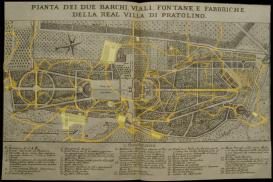The Garden of Pratolino, located twelve kilometers from Florence on the slopes of the Apennine Mountains, was created during the second half of the XVI century at the command of Grand Duke Francesco I de Medici under the supervision of his chief engineer Bernardo Buontalenti. It immediately turned into one of Europe's greatest marvels not only because of its numerous artistic masterpieces but also because of the high-tech hydraulic system employed in the garden. Its network of aqueducts, its numerous fountains and pneumatic devices and its water-powered automata were all integrated in a single hydraulic system. The Garden of Pratolino represents the material translation of the then recently discovered ancient works of Hero of Alexandria.
While designing the Pratolino's water-games in 1582, Buontalenti asked Oreste Vannoccio Biringuccio to translate Hero's Pneumatics into Italian. Buontalenti was seeking inspiration and attempted to establish a connection to the ancient culture via Hellenistic pneumatics, which was re-emerging in this time thanks to the first complete Latin translation compiled seven years earlier in 1575 by Federico Commandino. The commission of the Garden of Pratolino in primis, but also of the gardens of Tivoli, Boboli and the numerous private gardens in particular in Tuscany, in fact laid the foundation for the renaissance of ancient pneumatics. This renaissance did not only incorporate the revival of a theoretical tradition, but also incorporated practical knowledge and the institutions linked to it, such as the Accademia del Disegno.
Documents of an administrative character, sketches and notes of construction as well as reports of travelers are the main sources at our disposal concerning the Pratolino Garden. These sources allow for an investigation of the way in which ancient science and technology were reactivated during early modern times in a process of transformation that resulted in the generation of new knowledge. The project "Pratolino: the History of Science in a Garden" aims to analyze the renaissance of one science, pneumatics, from both a technological and a theoretical perspective, focusing in particular on the mutual interactions and influences of both fields.

